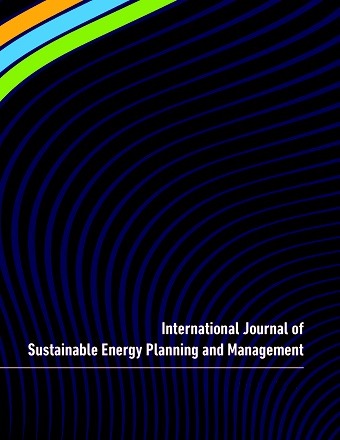Impact of One- and Two-axis Solar Tracking on Techno-Economic Viability of On-Grid PV Systems: Case of Burnoye-1, Kazakhstan
Main Article Content
Abstract
Kazakhstan is currently committed to develop its renewable energy resources. In 2012, the government introduced a low-carbon energy strategy to reduce the production of air pollutants, including anthropogenic CO2e, and to increase the share of clean energy up to 50% of total consumption by 2050. As a contribution to this strategy, this paper presents a comparison in techno-economic performance of three scenarios. The differentiation will be between currently implemented fixed-slope on-grid PV power plants in Kazakhstan and proxy similar solar parks using one- or two-axis solar tracking systems. This paper aims to determine to what extent the more effective, but more expensive tracking systems might be a suitable standard in future PV power stations in the country. For this purpose, the existent fixed-slope 50 MWp Burnoye-1 commercial solar power plant located in Jambyl region, Kazakhstan, is used as a benchmark. As expected, solar panels with tracking systems produce more electricity year-round compared to those with fixed slopes. In comparison, one- and two-axis tracking systems led almost to the same amount of electricity export to the grid. Furthermore, despite the proxy PV power stations with one- and two-axis tracking technology could reduce around 10 ktCO2e emissions per year. This 25 to 29% and 33 to 33% ratio of extra-cost to extra-energy production, respectively, made both tracking scenarios not economically competitive compared to fixed panels. Nevertheless, if a tracking system has to be considered to further reduce GHG emissions and add extra annual electricity generation using current installed capacity of Burnoye-I, our results demonstrated that one-axis tracking should be preferred above two-axis system.
Article Details
Articles published in International Journal of Sustainable Energy Planning and Management are following the license Creative Commons Attribution-NonCommercial-NoDerivs 3.0 Unported (CC BY-NC-ND 3.0)
Authors retain copyright and grant the journal right of first publication with the work simultaneously licensed under a Creative Commons Attribution License: Attribution - NonCommercial - NoDerivs (by-nc-nd). Further information about Creative Commons
Authors can archive post-print (final draft post-refereering) on personal websites or institutional repositories under these conditions:
- Publishers version cannot be stored elsewhere but on publishers homepage
- Published source must be acknowledged
- Must link to publisher version

